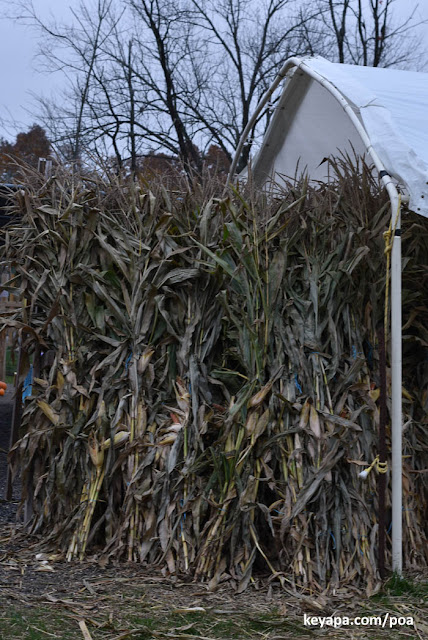 |
| Two types of grassland, side by side |
Whenever I take a walk outside, I am always struck by how various grass communities (whether natural or artificial) seem to have very distinct physical appearances. In today's suburban world of course, the most visible grass communities are the lawns that grace many homes. They're composed of grass species that are short and adapted to lots of mowing. But go to some nearby natural area like a pine and wiregrass savanna, and now much taller grasses dominate.
The grass species that are found in each type of community can vary significantly, and this difference was a topic investigated by researchers in Madagascar. In this country, the vast old growth grasslands (which includes savannas) are in peril due to misguided afforestation efforts by some. This is because the common misperception (as in many other countries in tropical areas that were once colonized) is that these grasslands are the products of human activity and derived from areas that were once forests.
 |
| Cynodon dactylon, a major component of the grazing grassland. Yes, that's Bermudagrass, a common turf grass in the USA and elsewhere. |
In their study, they examined (1) whether some species were associated together more often than not to form a specific assemblage or community. They also looked at (2) the functional attributes of each species with regards to flammability, palatability and tolerance to fire and grazing. These were:
- Plant height - taller plants tend to be more flammable
- Leaf thickness - thicker leaves tends to be less palatable
- Leaf C/N ratio - leaves with higher C/N ratios tend to be more flammable
- Leaf shape - wide short leaves are preferred by grazers as more palatable, while long narrow leaves ignite easily and burn more intensely
- Plant bulk density - high bulk density grasses provide more forage per bite, whereas low density grasses provide more aeration for fires.
They found several fascinating and important things:
First, they found that, indeed, species tended to cluster together into distinct spatial assemblages. Some species tended to be found together with the same group of species more often than not, and only in certain locations.
Secondly, they also found that the species they studied in Madagascar could be divided into 3 distinct functional groups. The first functional groups showed adaptions for grazing, and are mostly short grasses with high bulk densities, and leaves that are short, wide, and thin. Many of these are mat-forming, using either rhizomes or stolons. The second functional group is adapted for fire, and is comprised of tall bunched grasses with thicker leaves, low bulk density and low leaf width to length ratios. They also found a distinct and third functional group that were intermediate between the two extremes.
 |
| A fire adapted grass (Imperata cylindrica) |
Finally, and most importantly, they found a relationship between the spatial assemblages and the functional groups. The functional group of a species influences which assemblage contains it (see table below).
 |
| Solofondranohatra CL et al, 2020 |
Thirteen of 14 species in the grazing functional group (92.85% of the total species exhibiting grazing adaptations) were found in assemblage 1. In contrast, 12 of the species in assemblage 2 were from the fire functional group, and none were from the grazing functional group. They also found relatively high levels of endemism in each assemblage.
All these findings support the view that the various Madagascar old growth grasslands have been shaped by either fire or grazing, and that the levels of endemism, diversity, and evolutionary ages of the species means that these complex assemblages were formed and have been in existence millions of years before the advent of human activity in the island. Humans only entered the picture in this area around 10,500 before the present (BP), and only made significant changes to the landscape around 2300 years ago. Thus, it is likely that many of the grasslands in Madagascar are not secondarily derived due to human activity, but are natural and ancient environments.
This study again highlights the importance of not simply taking as gospel the widespread belief that all grasslands in tropical areas are secondarily derived, and a product of human activity and degradation of forested areas. It should give pause to those who want to go full on ahead with afforestation efforts without careful study. Beyond the stupidity of destroying ancient habitats and the diverse plants and animals within and replacing them many times with commercial timber, such projects have so far yielded mostly massive failures, mainly because they try to introduce plants to areas that are not conducive to their survival, instead of trying to address the underlying economic and societal conditions that foster the destruction of forests and the creation of real secondary grasslands.
Note: Interestingly, the researchers noted that the loss of the ancient grazers that maintained the grazing-adapted grasslands, may have been ameliorated by the introduction of cattle and other new grazers by humanity.
Reference:
Solofondranohatra CL, Vorontsova MS, Hempson GP, Hackel J, Cable S, Vololoniaina J, Lehmann CER. 2020 Fire and grazing determined grasslands of central Madagascar represent ancient assemblages. Proc. R. Soc. B 287: 20200598. http://dx.doi.org/10.1098/rspb.2020.0598
























